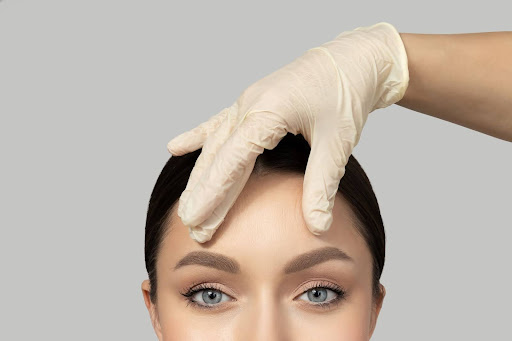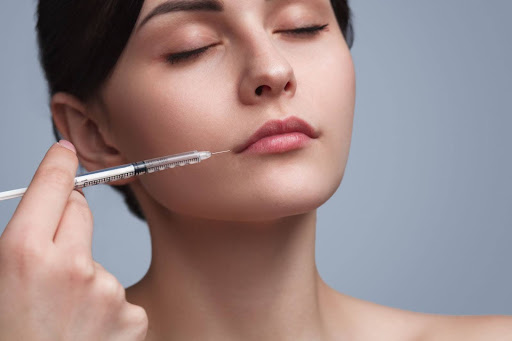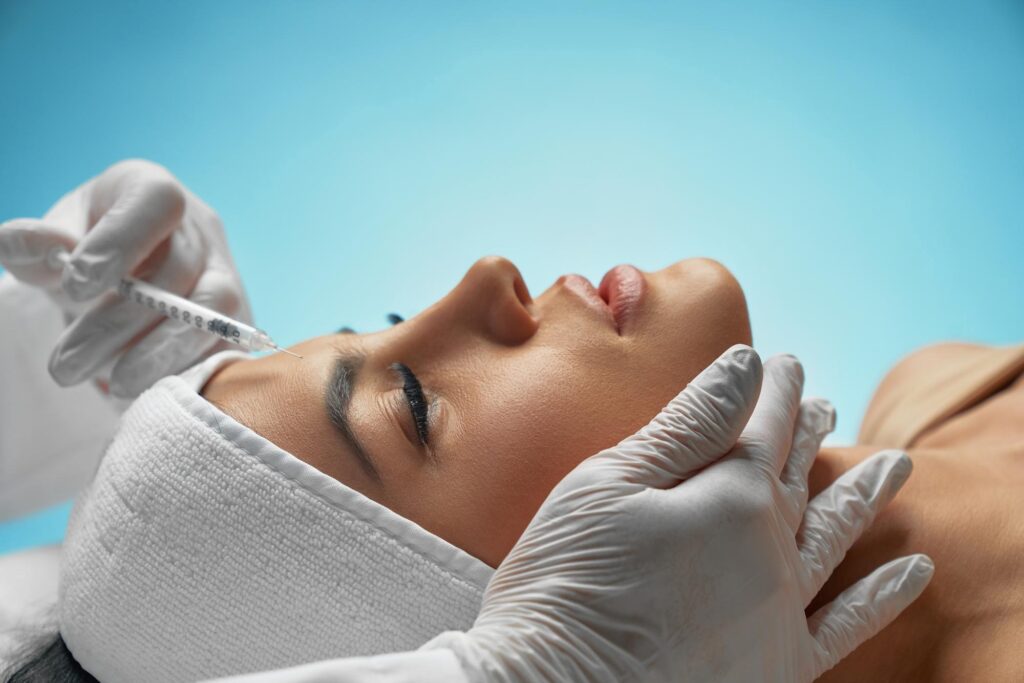In the ever-evolving world of cosmetic treatments, Botox has become a household name, renowned for its ability to turn back the clock on aging skin. This powerful injectable treatment, derived from the bacterium Clostridium botulinum, effectively targets dynamic wrinkles by temporarily paralyzing the muscles responsible for facial expressions.
However, like any cosmetic procedure, proper aftercare is crucial to ensure the best results and minimize potential risks and complications. In this comprehensive guide, we explain what you can expect after skin treatments like Botox, so that you go into the procedure with confidence.
Understanding Botox Treatments and Effects
Botox, also known as botulinum toxin, is a popular cosmetic treatment used to reduce the appearance of wrinkles, particularly those caused by repeated facial movements. The procedure involves injecting small amounts of the toxin into targeted muscles, which temporarily relaxes them and smooths out wrinkles.
Some of the key benefits of the procedure include:
- Reduction of wrinkles: Botox effectively diminishes the appearance of facial wrinkles, particularly dynamic wrinkles caused by repetitive muscle movements.
- Non-surgical solution: Unlike invasive procedures such as facelifts, Botox is minimally invasive and does not require surgery, resulting in less downtime and minimal discomfort.
- Quick procedure: Botox injections can be administered in a short office visit, typically taking just a few minutes to complete, making it a convenient option for busy individuals.
- Long-lasting results: While not permanent, Botox provides noticeable improvements that can last for several months, allowing patients to enjoy smoother, younger-looking skin without frequent touch-ups.
Despite its effectiveness, Botox is not a one-size-fits-all solution. Different brands of botulinum toxin and variations in injection techniques can yield varying results. Therefore, it’s essential to consult with qualified professionals who have experience administering Botox injections.
Learn More About the Botox Procedure
How Long Is Recovery From Botox?
Recovery from Botox is typically minimal, with most patients able to resume their normal activities immediately after the outpatient procedure. While some individuals may experience mild discomfort or bruising at the injection sites, these symptoms typically subside within a few days.
It’s advisable to avoid strenuous physical activity, and excessive heat exposure, including tanning beds and hot baths, for the first few days after treatment to minimize the risk of complications. However, most patients can return to their usual activities within 24 hours, making Botox an ideal treatment option for those seeking a convenient and effective facial treatment.
Immediate Post-Treatment Care
After undergoing a Botox procedure, patients must adhere to specific aftercare instructions to optimize results and minimize side effects. Here are some essential steps to follow immediately following your treatment:
- Avoid strenuous activity: Refrain from engaging in strenuous exercise or physical exertion for at least 24 hours after treatment. Vigorous activity can increase blood flow and potentially disperse the injected Botox, reducing its effectiveness.
- Minimize alcohol consumption: Alcohol can thin the blood and increase the risk of bruising and swelling at the injection site. It’s best to avoid excessive alcohol consumption for the first 24 hours post-treatment.
- Be mindful of blood pressure: Activities that increase blood pressure, such as hot showers or saunas, should be avoided for the first day after treatment. Elevated blood pressure can contribute to bruising and swelling.
- Apply ice packs: To reduce swelling and discomfort, gently apply ice packs to the treated areas for short intervals during the first few hours after treatment.
What is the 4-Hour Rule After Botox?
The 4-hour rule after Botox advises patients to avoid lying down or manipulating the treated areas for at least four hours post-treatment. This precautionary measure helps ensure the even distribution of Botox within the targeted facial muscles, maximizing its effectiveness and reducing the risk of complications. By adhering to this guideline and maintaining a normal daily routine, patients can minimize the risk of facial swelling and achieve optimal results from their Botox treatment.
Managing Bruising and Swelling
Bruising and swelling are common side effects of Botox injections, but there are steps you can take to minimize their appearance and duration:
- Use arnica gel: Arnica, a natural remedy known for its anti-inflammatory properties, can help reduce bruising and swelling when applied topically to the treated areas.
- Avoid blood-thinning medications: Certain medications, such as aspirin or nonsteroidal anti-inflammatory drugs (NSAIDs), can increase the risk of bruising. Consult your healthcare provider before taking any blood-thinning medications after your Botox treatment.
- Stay hydrated: Drinking plenty of water can help flush toxins from your body and promote faster healing. Aim to drink at least eight glasses of water per day.
Are There Any Risks or Complications Associated With Botox?
While Botox is generally considered a safe and effective cosmetic procedure, there are potential risks and complications if not administered properly. These can include temporary muscle weakness, drooping eyelids, or allergic reactions. However, when performed by qualified professionals, such as board-certified plastic surgeons or experienced healthcare providers, the risk of complications is minimal.
It’s crucial to choose a reputable provider, such as the team at Botox Montreal, and follow all aftercare instructions diligently to minimize any potential risks. With proper precautions and skilled administration, Botox remains a safe and reliable option for achieving smoother, more youthful-looking skin.
Long-Term Aftercare Tips
While the immediate post-treatment period is critical, long-term aftercare is equally important for maintaining optimal results and ensuring patient satisfaction. Here are some additional aftercare tips to consider:
- Avoid excessive sun exposure: Protect your skin from harmful UV rays by wearing sunscreen daily and avoiding prolonged sun exposure, especially during peak hours. UV radiation can accelerate skin aging and diminish the effects of Botox.
- Follow a gentle skincare routine: Use mild cleansers and moisturizers to keep your skin hydrated and healthy. Avoid harsh exfoliants or abrasive skincare products that can irritate the skin.
- Schedule follow-up appointments: Regular follow-up appointments with your healthcare provider or plastic surgeon are essential to monitor your progress and determine if additional treatments are needed.
- Be patient: It may take several days to see the full effects of Botox, so be patient and allow your body time to adjust. Avoid overanalyzing your results immediately after treatment.
Bid Farewell to Fine Lines and Wrinkles: The Ultimate Guide to Botox
The Best Botox Treatments in Montreal
At Botox Montreal, we pride ourselves on providing top-notch Botox services tailored to your individual needs. Our experienced team of professionals is dedicated to helping you achieve your aesthetic goals with precision and care. From smoothing out wrinkles to reducing the appearance of fine lines, we offer a range of Botox treatments designed to rejuvenate and enhance your natural beauty.
Thanks to our state-of-the-art facility and commitment to excellence, you can trust that you’re in good hands. Experience the difference with Botox Montreal and discover a more youthful, radiant you. Schedule a consultation today and let us help you look and feel your best!Contact Us Today!







